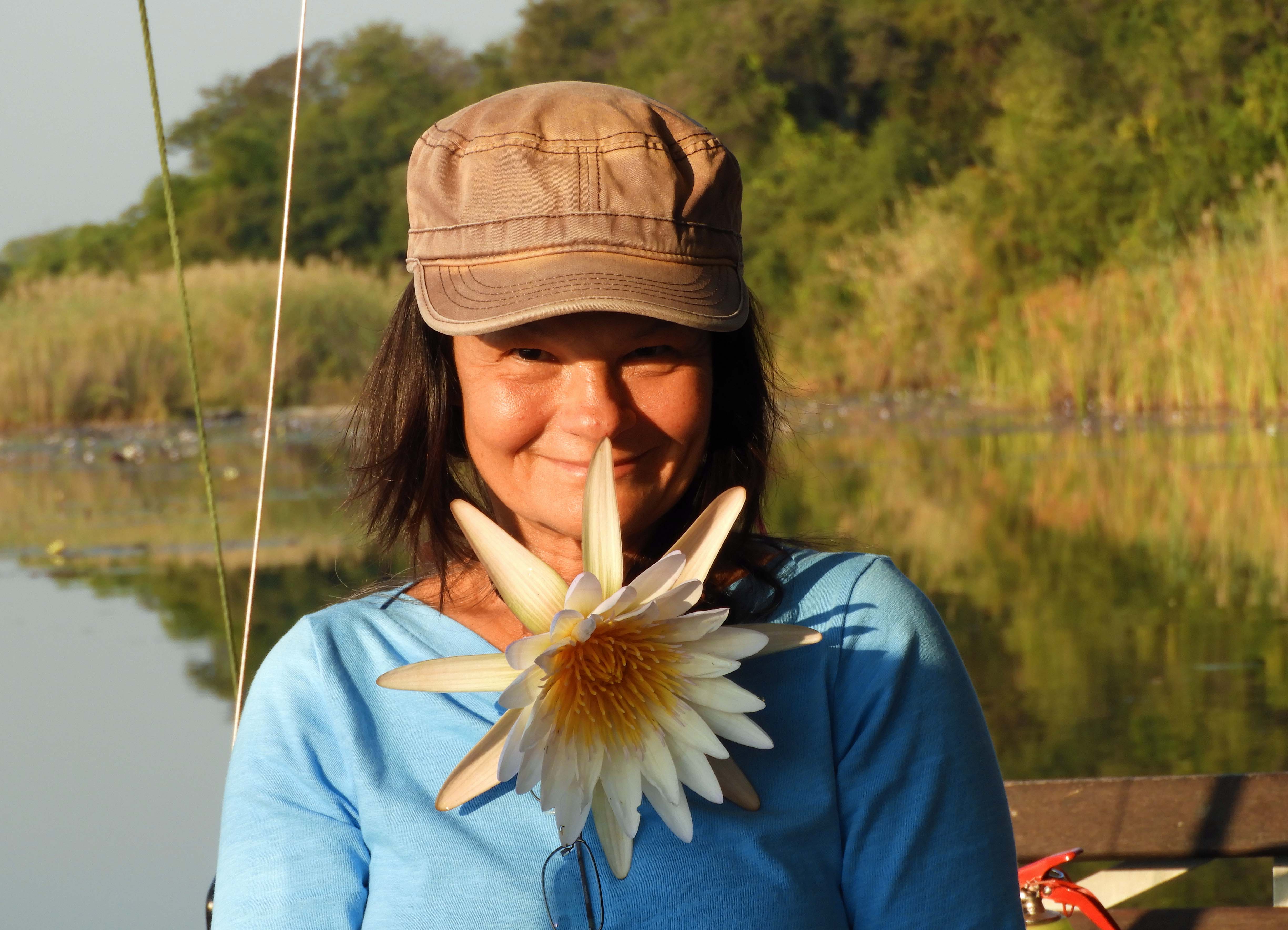Elephant caution signs replace those of cattle on the road and elephants, hippos, birdlife and water lilies characterise the far reaches.
The journey north from Grootfontein took me through the belt of makalani palms and through the Mururani veterinary gate into the Kavango Region. From there on it's rural Namibia, with homesteads, people carrying water containers, cattle, goats, donkeys and donkey carts, and the occasional ox-drawn sled. Padlangs - along the road - grass, wood, seasonal fruit like monkey oranges and watermelons, wood carvings and pottery bowls are on display.
I always feel a tinge of excitement turning into the access road to Haksuembe River Lodge, a short way northwest of Rundu, passing the Kavango homesteads and women fishing with woven funnel traps in the shallows at certain times of the year.
On the banks of the Okavango River, Hakusembe is a peaceful garden of Eden. Thatch roofed chalets, a green lawn, large leafy trees and the shimmering river create this enchanted haven. From across the river in Angola, children's laughter and the gentle mooing of cows drift in the air. At night, the music is provided by the chiming of reed frogs and in the morning, after the roosters have welcomed in the dawn, the sound of doves, swamp boubous and coppery-tailed coucals rings through the air. Hakusembe keeps an old tradition of delivering a flask of coffee to the chalets at first light, placing the tray on the outside table. I opened my door to the mist rising off the river and brought it in, sipping on the hot coffee, delighted to watch the world turning gold, an alchemist's dream.
After relishing the peace of Hakusembe, I took a slow drive from Rundu eastwards to Divundu, making many stops along the way to meet people along the road and collect stories (which led to meeting more people and hearing their stories). And so the journey unfolded, at its own pace, as journeys do. By the time I arrived at Divundu, my story basket was just about full. From Divundu, the road crosses the Okavango River and enters Bwabwata National Park, where some areas are designated as core areas and others as multi-use areas with people co-existing with wildlife; a wonderful solution for both which was implemented after independence when poaching was rife and many people were living in the area. A short distance into the park and I was waylaid by elephants crossing the road, a perfect beginning to a trip into the wild Zambezi. But I was getting behind schedule and the sun was already starting to dip in the sky.
At Kongola, I followed the route southwards to the Kwando-Linyanti area, past Mashi Crafts, a treasure-house of local craft, and the service station to drive the last 24km to Namushasha River Lodge. An African beauty, the lodge is positioned in the trees overlooking the Kwando River and its floodplains. Tree squirrels flit about, vervet monkeys hop along the branches, hippos chortle from the water below and lechwe can sometimes be seen on the opposite bank, all part of the Namushasha magic. The Kwando is a bird haven and I was looking forward to the exciting boat trip and the game drive into Bwabwata National Park to (hopefully) see elephants at the well-known Horseshoe bend in the river.
But that would have to wait until the following day when I would move into the lodge's beautifully refurbished rooms and dine like a princess on the wooden deck under the brilliant stars. But, for now, the sleepy sun was already turning in for the day. I was booked into the spacious, tree-filled campsite for the night and hurried to set up my tent before dark. The hippos were below my (unfenced) site and I had a restless night musing that a hippo, considered to be one of the most dangerous animals in Africa, might choose to walk over my very small tent rather than around it. But I was camped under a large baobab tree on the good earth and Zambezi blessings fell softly over me like fragrant blossoms, keeping me safe for the night.
My time in Zambezi would still include Chobe River Camp across from Chobe National Park in the bottom corner of the panhandle and the stylish Zambezi Mubala Lodge on the banks of the great and mighty Zambezi.
Join me next week for the next leg of my Zambezi journey, discovering the riches of the rivers and the jewels of this water-rich and beautiful section of Namibia.
